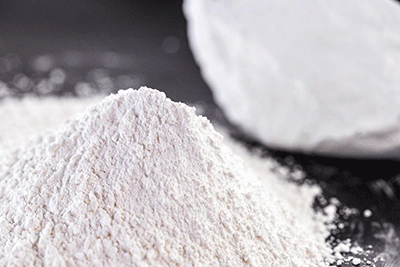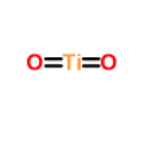


| Item | Index |
|---|---|
| Appearance | White powder |
| TiO2 content | 94.0% |
| Moisture | ≤0.4% |
| Residue on 45μm | 0.01% |
| Oil absorption | 19.0g/100g |
| Reducing power | 1950 |
| PH | 7.0 |
| Resistivity of water extraction | 100Ω |
| Specific gravity | 4.0g/cm³ |
| Inorganic coating | Alumina; Zirconium |
| Organic treatment | Present |
| Key features: |
1)High gloss 2)High whiteness with blue undertone 3)Easy wetting and dispersing |
| Recommended applications: |
1)Solvent -based paint 2)Industrial paint 3)Furniture paint |
| Packing | In 25KG /500KG /1000KG bag or as per customer’s requirement |
|---|---|
| Storage | This product should not be stored outside or exposed to temperature extremes or to moisture.
To ensure optimum performance, it is recommended that the product is used on a first in, first out basis from receipt of shipment. |
Tel: 0086-25-52397808
E-mail: info@titanium-dioxide.net


| Common Names | TITANIUM DIOXIDE | ||
|---|---|---|---|
| Structure |

|
||
| CAS No. | 13463-67-7 | Boiling Point (℃) | 2900 |
| Molecular Weight | 79.866 | Melting Point (℃) | 1840 |
| Appearance | white powder | Bulk density | 3.84 |
| HS Code | 3206111000 | Flash Point (℃) | 2500-3000 |
| Safety Phrases | S2;S25;S26;S36;S36/S37 | ||
|---|---|---|---|
| RIDADR | No hazardous good according to the regulation. | ||
| WGK Germany | NONE | ||
| Packaging Group | NONE | ||
| Hazard Class | NONE | ||
| SYMPTOMS | PREVENTION | FIRST AID | |
| Inhalation | Cough. Sore throat. Redness. Burning sensation. Itching. | Use local exhaust or breathing protection. | Fresh air, rest. |
| Eyes | Redness. Pain. | Protective gloves. | Rinse opened eye for several minutes under running water. Then consult a doctor. |
| Ingestion | Abdominal pain. Nausea. Vomiting. | Do not eat, drink, or smoke during work. Wash hands before eating. | Rinse mouth. Induce vomiting (ONLY IN CONSCIOUS PERSONS!). Refer for medical attention . |
Titanium Dioxide Pigment R-2196
R-2196 is a rutile titanium dioxide pigment that is produced using the sulfate process. Titanium dioxide is a naturally occurring oxide of titanium and is one of the most widely used white pigments due to its excellent opacity and brightness.
The sulfate process for producing titanium dioxide involves the following steps:
1. Ore Extraction: Titanium dioxide is sourced from naturally occurring minerals, typically ilmenite or rutile. These minerals are processed to extract titanium dioxide.
2. Purification: The extracted ore undergoes several purification steps to remove impurities and unwanted substances.
3. Digestion: The purified titanium dioxide is then mixed with sulfuric acid to create a titanium sulfate solution.
4. Hydrolysis: The titanium sulfate solution is hydrolyzed, resulting in the formation of hydrated titanium dioxide.
5. Calcination: The hydrated titanium dioxide is heated at high temperatures to remove the water and produce pure titanium dioxide pigment.
R-2196 is a rutile-type titanium dioxide, which means that the crystal structure of the pigment is in the rutile form. Rutile titanium dioxide is known for its higher refractive index and superior UV light absorbing capabilities compared to anatase-type titanium dioxide.
The appearance of R-2196 is a white powder, which is characteristic of titanium dioxide pigments. It is commonly used in various industries, including paints, coatings, plastics, inks, and cosmetics, due to its excellent opacity, brightness, and high gloss properties. It provides good hiding power and enhances the whiteness of the final product.